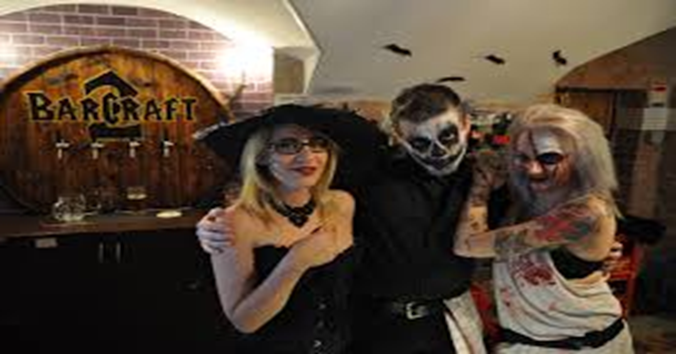Long before trick-or-treat buckets started, there was Samhain (pronounced sow-in), an ancient Celtic festival celebrated over 2,000 years ago across Ireland, Scotland, and Wales.
For the Celts, October 31 marked the end of summer and harvest, and was believed that the veil between the living and dead was thin and spirits could cross over
Villagers lit huge bonfires to drive away evil forces and wore animal-skin disguises to confuse wandering spirits. What began as protection soon evolved into performance, the earliest spark of what we now call “dressing up.”
To keep these spirits happy (and out of trouble), villagers would leave out food and offerings, feeding the dead so they wouldn’t play tricks on the living.

Centuries later, Irish immigrants carried the tradition to the United States in the 1800s, giving Halloween a new home and identity. Along with them came the legend of Jack O’Lantern.
In Ireland, people carved turnips and beets into lanterns to ward off Jack’s wandering spirit. But in America, turnips were scarce and pumpkins were plentiful, bigger, brighter, and perfect for the eerie glow symbolizing Jack’s cursed light.

According to folklore, Stingy Jack was a trickster who repeatedly fooled the Devil, making him promise never to take his soul. But when Jack died, Heaven refused him, and Hell kept its word, leaving him to wander the Earth forever.
To light his way, the Devil gave him a single burning coal, which Jack placed inside a carved turnip. And so, Jack of the Lantern or Jack-o’-Lantern was born.

Over time, Jack’s lantern became a symbol of Halloween. A reminder of the night when spirits roamed freely and humans protected themselves with light and laughter.
The traditional black and orange colors of Halloween also trace back to the Celtic festival of Samhain. Black representing the death of summer, and orange symbolizing the harvest’s glow.
In the 8th century, the Christian missionaries sought to replace pagan festivals with Christian ones. Pope Gregory III designated November 1st as All Saints’ Day, a time to honor saints and martyrs.
The evening before All Saints’ Day is known as All Hallows’ Eve, which eventually evolved into Halloween. Despite the new religious undertones, many pagan customs such as dressing up and lighting fires persisted, blending spirituality, superstition, and celebration.

Today, Halloween is celebrated in over 30 countries. It’s no longer about fearing the unknown; it’s about embracing it with face paint, fake blood, and a good sense of humor.
By: Idris Olayinka

